FADING NASHVILLE FADING NASHVILLE





















































MTSU’s homeless assistance program will serve as a model for other Tennessee universities.




Richard T. says an emotional goodbye to his customers as he moves to a more traditional job and his own apartment.

Joaquin Phoenix gets the last laugh in Joker which opened amid mixed reviews in Nashville theaters on Oct. 2.

Our
Cathy Jennings, Chair Tom Wills, Bruce Doeg, Demetria Kalodimos, Ann Bourland
Linda Bailey • Amanda Haggard • Erica Ciccarone • Daniel Meigs • Hannah Herner • Tom Wills • Ridley Wills II • Joe Nolan • Mr. Mysterio • Alvine • Jason T.
• John H. • Maurice B. • June P. • John G. • David “Clinecasso” C. • Michael W. • Nathan C.





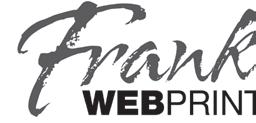
Cathy Jennings • Tom Wills • Joe First
• Andy Shapiro • Michael Reilly • Ann Bourland • Patti George • Linda Miller • Deborah Narrigan • John Jennings • Barbara Womack • Colleen Kelly • Janet Kerwood • Logan Ebel • Christing Doeg • Laura Birdsall
• Nancy Kirkland • Mary Smith • Andrew Smith • Ellen Fletcher • Michael Chavarria
Will Connelly, Tasha F. Lemley, Steven Samra, and Tom WIlls Contributor Co-Founders
Editorials and features in The Contributor are the perspectives of the authors. Submissions of news, opinion, fiction, art and poetry are welcomed. The Contributor reserves the right to edit any submissions. The Contributor cannot and will not endorse any political candidate.
Submissions may be emailed to: editorial@thecontributor.org
Requests to volunteer, donate, or purchase subscriptions can be emailed to: info@thecontributor.org Please email advertising requests to: advertising@thecontributor.org







Mailng Address

The Contributor P.O. Box 332023, Nashville, TN 37203 Main Office: 615-499-6829 Vendor Office: 615.829.6829


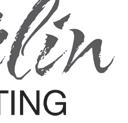
Proud Member of:



Printed at:

Follow The Contributor:
Copyright © 2018 The Contributor, Inc. All rights reserved.

 BY TOM WILLS, CO-FOUNDER
BY TOM WILLS, CO-FOUNDER
The paper you just paid for was bought by someone else first, otherwise it wouldn’t exist. That’s how The Contributor works. A vendor who experienced homelessness paid 50 cents for this paper and then sold it to you. By buying it and taking it with you, you’ve just encouraged that vendor to buy another. BOOM! That’s the solution. Now keep reading. This paper has something to say to you.


Street papers provide income for the homeless and initiate a conversation about homelessness and poverty. In 2007, The Contributor founders met at the Nashville Public Library downtown to form one. In a strike of lightning we named it The Contributor to infer that our vendors were “contributors to society,” while their customers could contribute to their work. But, thunder from lighting is always delayed … It took three years, but Nashville embraced us like no other city in the world. The Contributor became the largest selling street paper per-capita on the globe. And today 50 percent of our six months or longer tenured vendors have found housing. BOOM! The thunder has struck.
The Contributor is a different kind of nonprofit social enterprise. We don’t serve meals or provide emergency shelter. We don’t hire people in poverty to create products or provide a service. Rather, we sell newspapers to homeless people who work for themselves. We train them to sell those papers to you, keep the money they earn, and buy more when they need to replace their stock.
Our biggest fans don’t always get this. Like lightning without the thunder, they see the humanity of the vendor but misunderstand the model. Case in point: In 2013 during a funding crunch, a representative of one of Nashville’s biggest foundations exclaimed, “I’m such a big fan that I never take the paper!” We responded, “Well, that’s why we are in a funding crunch.” BOOM! Thunder was heard. Taking the paper makes our model work — not taking it breaks it. And selling the paper twice doesn’t just fund the paper, it funds housing and change. BOOM! Our vendors report their sales to qualify for subsidized housing and even for standard housing deposits and mortgages. They don’t consider your buying the paper a “donation.” It is a sale. When they sell out, they buy more and build the paper trail of a profitable business. Until making these sales, many of our vendors had never experienced the satisfaction of seeing their investment pay off. And when it does, it liberates! They have become “contributors” to their own destiny. And Nashville has become a city of lightning and thunder. BOOM!
Now that you are a SUPPORTER , become an ADVOCATE or a MULTIPLIER You are already a SUPPORTER because you know that taking the paper makes the model work. You bought the paper and you are reading it. Now your vendor is one copy closer to selling out, which is exciting! Now you can become an ADVOCATE when you introduce your friends to your favorite vendor, follow us and share our content on social media, contact us when you witness a vendor in distress or acting out of character, or explain why others should pick up a copy and always take the paper when they support a vendor. And, you can become a MULTIPLIER when you advocate for us AND directly donate to us or become an advertiser or sponsor of The Contributor. Our income stream is made of 50-cent- at-a-time purchases made from our vendors, matched by contributions, ad sales and sponsorships from multipliers like you. Because our vendors are business owners, your donations are seed-money investments in their businesses and multiply in their pockets. Every donated dollar multiplies four-to-seven times as profits in the pockets of our vendors. Thanks for contributing.

El periódico que usted acaba de pagar fue primeramente comprado por alguien mas, de otra manera no existiría. Así es como funciona The Contributor. Un vendedor que está sin hogar pagó 50 centavos por este periódico y después se lo vendió a usted. Al comprarlo y llevarlo con usted, usted animo a este vendedor a comprar otro. BOOM! Esa es la solución. Ahora continúe leyendo. Este periódico tiene algo que decirle. Los periódicos vendidos en la calle proveen ingresos para las personas sin hogar e inicia una conversación sobre lo que es la falta de vivienda y la pobreza. En el 2007, los fundadores de The Contributor se reunieron en una librería pública en Nashville para formar uno. Y como golpe de un rayo, le llamamos The Contributor para dar a entender que nuestros vendedores eran “contribuidores para la sociedad,” mientras que los consumidores podrían contribuir a su trabajo. Pero, el trueno siempre tarda más que el rayo. Nos llevó tres años, pero Nashville nos acogió como ninguna otra ciudad en el mundo. The Contributor se volvió uno de los periódicos de calle más vendido en el globo. Y hoy el 50 por ciento de nuestros seis meses o más de nuestros vendedores titulares han encontrado casa. BOOM! Ha llegado el trueno.
The Contributor es una empresa social sin fines de lucro muy diferente. Nosotros no servimos comida or proveemos alojo de emergencia. No contratamos gente en pobreza para crear productos or proveer un servicio. En vez, nosotros vendemos periódicos a las personas sin hogar para que ellos trabajen por ellos mismos. Nosotros los entrenamos como vendedores, ellos se quedan el dinero que se ganan, y ellos pueden comprar más cuando necesiten reabastecer su inventario.
Nuestros mas grandes aficionados no entienden esto. Como un rayo sin trueno, ellos ven la humanidad de el vendedor pero no comprenden el modelo. Un ejemplo: En el 2013 durante un evento de recaudación de fondos, uno de los representantes de una de las fundaciones más grandes de Nashville, exclamó: “Soy un gran aficionado, y es por eso que nunca me llevo el periódico.” Al cual nosotros respondimos: “Y es por esa razón por la cual estamos recaudando fondos.” BOOM! Y se escuchó el trueno! El pagar por el periódico y llevárselo hace que nuestro sistema funcione, el no llevarse el periódico rompe nuestro sistema. Y el vender el papel dos veces no da fondos para el periódico, pero da fondos para casas y causa cambio. BOOM! Nuestros vendedores reportan sus ventas para calificar para alojamiento subvencionado y hasta para una casa regular, depósitos e hipotecas. Ellos no consideran el que usted compre el periódico como una “contribución” pero más lo consideran como una venta.
Cuando se les acaba, ellos compran mas y asi logran establecer un negocio rentable. Hasta que lograron hacer estas ventas, muchos de nuestros vendedores nunca habían experimentado el placer de ver una inversión generar ganancias. Y cuando logran hacer esto, da un sentido de Liberación! Ellos se han vuelto contribuidores de su propio destino, y Nashville la ciudad de el trueno y el rayo. BOOM!
Ahora que te has vuelto nuestro SEGUIDOR, vuelve te en un ABOGADO o un MULTIPLICADOR. Ya eres nuestro SEGUIDOR, porque sabes que al llevarte este periódico sabes que esto hace que nuestro modelo funcione. Compraste el papel y lo estas leyendo. Ahora nuestro vendedor está a una copia más cerca de venderlos todos. Que emoción!
Ahora que te has vuelto nuestro ABOGADO cuando presentes a tus amigos a tu vendedor favorito, siguenos y comparte nuestro contenido en social media, contactanos cuando seas testigo de un vendedor actuando de manera extraña o fuera de carácter. O explicale a tus amigos porque ellos deben de llevarse el periódico cuando ayuden a un vendedor.
Te puedes volver un MULTIPLICADOR cuando abogues por nosotros, Y directamente dones a nosotros o te vuelvas un anunciador o patrocinador de The Contributor. Nuestra fuente de ingresos consiste en ventas de 50 centavos hechas por nuestros vendedores, igualadas por contribuciones, venta de anuncios, y patrocinios de multiplicadores como usted. Porque nuestros vendedores son dueños de negocios, las donaciones que den son dinero que es invertido y multiplicado en sus bolsas. Cada dólar donado se multiplica de cuatro a siete veces en la bolsa de nuestros vendedores.
Gracias por Contribuir.MTSU will present its program to help homeless students to other colleges and universities in Tennessee in an effort to serve this underserved student population.
A new state law that took effect July 1 requires any post-secondary educational institution funded by the state of Tennessee to designate a liaison to homeless students and to develop a program to provide them access to housing. MTSU’s program, which has been in effect since 2008, was chosen to serve as the model.
The bill was sponsored in the state House of Representatives by Rep. Carson W. “Bill” Beck and in the state Senate by Sen. Jeff Yarbro, both of Nashville. Becca Seul, associate director of MTSU’s MT One Stop, and Danielle Rochelle, coordinator of outreach and support programs for MT One Stop, testified in support of the bill when it was in committee.
In preparation for sharing their expertise with other universities, Seul and Rochelle are working on a manual on how to start a homeless students program and how to obtain community resources to keep it running.

“It’s something that’s already in effect in the state, and we’ve been asked to serve as consultants … to other schools and agencies looking to start something like this,” said Seul.
Rochelle verifies which MTSU students are considered homeless under federal standards at the start of each semester. Her office also extends aid to unaccompanied minors and students aging out of foster care. Rochelle additionally supervises the MTSU Student Food
Pantry, a storeroom full of nonperishable groceries on the second floor of the MT One Stop.

There have been over one hundred visits to the pantry so far this semester. Since its inception in 2012, the pantry has collected more than 127,300 pounds of food and has been visited more than 5,463 times by students in need.
Rochelle also is in charge of the Safety Net Fund, which is supported by a donation from State Farm. The fund was established to assist students who are at risk of losing their basic needs, which can include, but are not limited to, housing, food, health and transportation.
“We require they show the need for it,” Rochelle said. “If they’re working, we require a check stub, and, if they’re not working, a recent bank statement. If they need the money for food, we’ll give them a gift card toward food. If they need the money for housing on campus, we’ll send the money directly to housing.”
As part of their efforts to serve homeless students, Rochelle and Seul are formulating a “basic needs statement” for faculty to insert in each class syllabus. The statement would inform homeless students of how they can seek assistance. A similar statement already in the syllabi addresses aid for disabled students.
“This is something that is going to bring a lot of attention to MTSU in a good way,” Seul said about the program. “It’s going to highlight a problem that’s a nationwide issue, but it’s going to show that MTSU is addressing the problem and has been for over a decade.”
WE’RE HONORED TO SUPPORT THE CONTRIBUTOR AND TO CHAMPION GOOD NEWS IN NASHVILLE.
Launch Pad is looking to the future. As part of its mission to provide safe sleep shelters for youth experiencing homelessness, the nonprofit recently recruited a new executive director, long-time volunteer Ty Brown.
Brown is not new to working on youth homelessness. He began volunteering with Launch Pad in 2016, eventually rising to the role of Site Director, overseeing overnight volunteers. He most recently worked at the Oasis Center, a nonprofit that offers a variety of services for youth, including outreach to those experiencing homelessness.
“Any time you can get a job doing the thing you were already volunteering to do, you know you’re doing something right,” Brown says. “You’ll be having a fulfi lling job experience.”
As the Launch Pad team gears up to start its season on Nov. 1, Brown faces a fresh set of challenges.
Last year, Launch Pad hosted youth five nights a week, with other organizations unofficially picking up the remaining two days. With the outside organizations out of the picture this year, Launch Pad will expand to six days a week, with the goal of making it seven if they can fi nd the money and space.


For now, Launch Pad’s season runs until March 31, just to cover the cold weather months, but another goal is to be able to offer shelter year round.
“Just because the weather is not cold, doesn’t mean there aren’t other challenges,” Brown says. “In fact, I would guess that more people start moving through Nashville when it’s warmer. People still need showers. They don’t want to sleep on the streets, it’s not safe. The can have a good dinner and a good breakfast with us.”
The biggest goal Brown mentioned is for Launch Pad to have its own site in the future, which could offer services 24/7.
Launch Pad follows a similar season and model as Room In The Inn, but there are a few key differences. Launch Pad hosts only youth — up to 20 people age 18 to 24 per night — with each night located at a different church accessible by metro transit. They also have just one sleeping area per site, meaning couples can stay together and guests
who identify as transgender, nonbinary or gender fluid don’t have to pick a side or risk being misgendered. Th is model ensures a LGBTQ-affi rming space, and keeping the group small enables them to keep it “friendly and non-authoritarian,” Brown says. Youth in need of shelter register online at the Launch Pad website for a bed that night.
“We’re going to pay attention to using the correct pronouns,” Brown says. “We’re going to pay attention to keeping the atmosphere safe ... An emergency
the population they seek to serve. People age 18 to 24 face unique challenges to getting into housing compared to their older counterparts.
“People will stay with us for a long time, even if they’re working, and even if they’ve started the process of fi nding housing,” Brown says.
Brown says people who stay at Launch Pad have trouble saving up enough money to cover both a security deposit and fi rst month’s rent. On top of that, they’re vulnerable to be
Brown says. “We hear the stories of the youth that come to stay with us, and there’s almost always a lot of trauma involved. And none of them are there just because they didn’t feel like getting a job. They have a job and just don’t have a place to stay. They are fleeing abuse. They have mental health issues.”
Brown added, “When you hear people’s stories, you start to realize that, if I’d experienced the same thing they did I don’t think I’d be doing as well as they are.”
Make monetary donations at nashvillelaunchpad.com
Purchase items from the organization’s Amazon wishlist.

Refrain from just dropping o items you think might be of use.
Get the word out to young people who might be experiencing homelessness
Plain white T-shirts of all sizes, especially above XL
shelter is nobody’s idea of good housing. We’re just a last resort and we try to make that last resort as pleasant and as positive and affi rming as we can.”
According to data compiled in Nashville’s Coordinated Community Plan to prevent and end youth homelessness, there are an estimated 1,094 people age 18 to 24 experiencing homelessness in Nashville annually. The data also shows that in Nashville,15 to 30 percent of those youth identify as LGBTQ.
It saddens Brown that people are no longer able to stay with Launch Pad after 24, but having a limit on age ensures the nonprofit is serving
stopped by a credit check or don’t make enough income to cover double the rent, as some landlords want. Landlords in Nashville will be reluctant to rent to a young person with no credit history and, because of the market, can afford to be very picky, he says.
Getting to know the guests at Launch Pad has affected Brown, and he encourages people to volunteer regularly so they can build relationships with and learn from some of Nashville’s most vulnerable youth.
“The biggest misconception is that there must be a flaw in your character, and that’s why you’re homeless,”
Underwear of all sizes, especially boxer briefs
To work the evening shift (training required)
To make a meal once a month
To supply grab-and-go breakfast items
In the early 1890s, dark fired tobacco was selling in Adams; Clarksville; Guthrie, Ky; and Springfield for 2, 3, or 4 cents per pound. The cost of raising one acre was $42, but the sale of one acre yielded only $28. In 1904, the Planter’s Protective Tobacco Association of Kentucky, Tennessee and Virginia was organized to bring farmers, who were becoming desperate, an equitable price for tobacco. The association held its first meeting in Guthrie in 1907. Approximately 5,000 people, probably triple the population of the town, were present.
President of the association was Charles Fort, whose great, great grandfather, Elias Fort, had migrated from Edgecombe County, North Carolina around 1790 to Tennessee County. In 1830, his grandson, Joel Battle Fort, built a large, two-story Greek Revival home named Meridian Hill. His mansion was in what
became known as the blackpatch tobacco region and was representative of the wealthy tobacco growers’ plantation homes.
When he died in 1867, Elias left Meridian Hill to his daughter, Susannah Ligon. A year later, she sold her portion of her inheritance to her brother, Josiah William Fort, whose wife was Eliza Dancy Fort. They moved to Meridian Hill, then and now in Robertson County, northwest of Springfield at Sadlersville, where Josiah followed in his father’s footsteps by continuing to raise tobacco. He also was a Baptist preacher and judge. Josiah’s third son, Charles, became the next master of Meridian Hill.
Attempts to break the planter’s Protective Tobacco Association were led by the American Tobacco Company and the Italian firm, Regie. J. B. Duke, who controlled the American Tobacco Company and paid higher prices for the dark fired
tobacco to a group called the “Hillbillies” that declined to join the Planters Protective Tobacco Association. Duke’s idea was to dissuade farmers from supporting the association. During the most heated period of controversy, Fort stood firmly with the Association. He was threatened when he received a letter that read, “Dear Sir, we give you 10 days to withdraw from the Planter’s Protective Association as president or you had better order a bodyguard.” Fort issued a statement that read, “I shall never resign the office of president until the people who elected me request it.” The affair ended without incident.
In 1906, one wing of the association began vigilante activities. Thirty one men were present when this group held its first meeting in Stainbeck School. They called themselves “The Possum Hunters.” Violence broke out when warehouses in nearby
Adams and Clarksville were burned as were numerous privately-owned tobacco barns. Private individuals, including ex-sheriff Ben Sory, were threatened. Because the warehouses and barns were burned at night, people in the area called those who did this “The Night Riders.” The Night Riders’ activities reached a climax in 1907 with raids on the homes and barns of L. W. Lawrence and G. W. Fletcher. One Night Rider was killed and several others recognized.
Not long afterward, “Trust Buster” Teddy Roosevelt, during his term as President of the United States, ordered a suit to be brought against the American Tobacco Company and other monopolies. This anti-trust action resulted in American Tobacco Company being broken up into several major groups in 1911.Tobacco prices began to steadily rise and the Night Riders were disbanded.
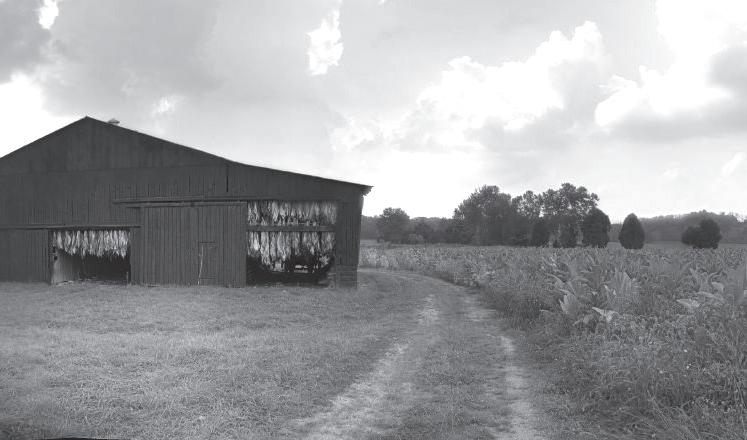

Richard T. is trying really hard not to get choked up. He’s talking about his customers — the ones who have been loyal to him throughout his last nine years selling
The Contributor. It’s these customers, as well as his relationship with God, that he credits with getting him through a depression. Soon he’ll move on to a more traditional job and his own apartment. He says he’ll wait until later to cry about it.
He asks if he can start by talking about the spots he sells his papers.
The Contributor: Totally.
Richard: I start in the morning about 20 till 6 a.m. Monday through Friday at 24th Avenue South and Blakemore Avenue. I go there until about 10 a.m. Then I go to 16th Avenue South and Magnolia Boulevard and I sell there until about 12:30, 1 p.m. My customers have really been a big help. I’ve been blessed to know them. If it wasn’t for them, I would probably be on the streets. I’m so grateful for the smiles and the waves and the good mornings, the money for the papers. It seems like a lot of people out there care about my well-being. I never met so many nice people in one area in my life. I love it. I love them. Those are the best two spots in the world when it comes to love, kindness and care. They treat me like I’m one of the family.

First of the year, I’m going to be starting a new job, so I’m giving up the papers. I’m going to miss them a lot because they’ve been
there for me when no one else was. They’ll always be in my prayers. I love them with all my heart and I’m very grateful to have met them, but I’m moving on. So I want to tell them now. Thank you for all that you’ve done for me. Thank you for your support.
What’s next for you?
I’ll be getting my own place, hopefully no later than March. I’m looking forward to that. I’m currently staying in a halfway house. If it wasn’t for my customers being as loyal as they are, I would probably be on the streets. I do pay rent.
I think back to when I was on the streets with no place to go. I was useless, hopeless, very depressed, worthless, didn’t have no one to turn to. But today it’s all different. And it’s all due to my God — who I love dearly — and the people that I encounter each day.
I’m excited about life now. I have meaning. I’m not useless, I’m not hopeless, I’m not in a state where I think I shouldn’t be living. I’m worth something today. I feel good inside. Every morning Monday through Friday, I’m on that corner. Sleet, snow, rain, I don’t care. I’m out there because I’m loyal to my customers, because they’re loyal to me. It’s built me some strong relationships that I don’t think I would have found anywhere else. I know God is in the mix. It’s awesome. This paper, the people, God has improved my life.
I’m looking forward to working in a warehouse or in machinery, and a little part time job at night, maybe three or four days a week. That will cover my bills and I can start me an account and I want a vehicle.
I haven’t ever really had my own place, you know? My own key. It’s always been staying with a family member or a halfway house or Nashville Rescue Mission or a friend. It’s not really ever been my own where I pay my bills, my responsibility, my key. I’m going for it.
It’s exciting. I think about it every day, what it would be like for me to go into my own apartment, fixing it up. I love cleanliness and I have to have my stuff in order. I can just imagine my place — I’m getting excited now! It’s something I look forward to.
Are there specific things that customers have done for you that stand out in your memory?
There’s this one lady I call Special K, she surprised me a couple years in a row on my birthday with a card, balloons, cake, the smile and the hug — that meant a lot to me.
I have another customer, Miss Leslie, she always speaks to me with a smile. She asks me, ‘How is your day? Are you OK?’ It means a whole lot.
Me and Miss Hannah got this certain way we speak to each other in the morning. We kinda bow down. And she laughs and I laugh and it just makes the day much better.
There’s another customer of mine, she works at the children’s hospital and she drives a silver car, and she’ll roll down her window each and every morning that I see her, and she’ll sometimes say ‘I don’t have nothing this morning, but I’ll make it up to you,’ and I’ll be like no, no that’s OK, but she does anyway.
There are two Miss Jennifers. One Miss Jennifer, she gives me a water every morning. She’s going to be leaving town soon, and I’m going to miss her because she’s really been a big help and a big influence in my life. Another Miss Jennifer, she rolls down her window and will be like ‘Good morning Richard!’ and I’ll be like ‘Good morning Miss Jennifer!’ and it makes my morning. Then there’s this other Jennifer, too! She always greets me with a smile, and we do the pinky promise thing. That’s my buddy.
This one lady drives this blue truck and she says, ‘I just love your smile!’ and I’ll be blushing then. And this other lady, she tells me ‘you are worth something’ and that means a lot to me. They’re all like angels in their own certain way and I wish the best for them because they have done nothing but bless me, cared and been kind to me.
When I didn’t have family to turn to, I knew I had a family out there on 24th Avenue South and Blakemore Avenue, and 16th Avenue South and Magnolia Boulevard. Each and every one of them has a special place in my heart and I want them to know this.



Peggy Snow’s painting of the International Market on Belmont Boulevard remains unfinished. The familiar redbrick building is depicted in Snow’s signature impressionistic style. She had positioned her easel across the street, to the left of the market, and the thick brick wall on the side of the building ascends up Bernard Avenue. A small table and two chairs sit out front on the sidewalk. The lettering above the awning is only partially completed, and she says that she has yet to finish the details in the background.
The building was demolished before she had the chance.

Snow’s paintings often go unfinished these days. For 24 years, she has been painting Nashvile’s fading landscape, cataloguing bygone buildings — churches, store fronts, restaurants and homes — before they are demolished.

The rate of demolition accelerates faster than Snow can work, and she’s forced to move on because, she says, “there’s nothing left to paint.” She says that as she’s approaching one of her subjects on an average day, she’s looking from a distance to see if it’s still there. “Then they’re gone. There’s a terrible hole where they used to be.”
There’s something prophetic about Snow. She presides over these structures, bearing witness to their last days. The Nashville Scene ’s late editor Jim Ridley once called Snow “the city’s designated mourner.” She
might also be our moral compass.
Talking to Snow upon first meeting her feels like reconnecting with an old friend — how all of the years and the distance between you shrink, and you’re back to finishing each other’s sentences, repeating the old jokes.
Snow paints en plein air, always in oils. Inspired by post-impressionists like Vincent van Gogh and Paul Cézanne, her style reveals the architecture of these buildings, but also what you might call their souls. Snow says in her artist statement that she’s motivated by “the passing beauty when an old building, resonant with past lives, is falling or is to be torn down.”
She often starts with a thin coat of yellow ochre, which she can then draw on with charcoal. Her paintings convey a sense of warmth that seems to emanate from within.
“It’s the old world. Our old world,” says Snow. “I know that some things get to where they have to be demolished, but many are not in that state and can be saved. I hate that they’re knocked down. The new architecture is not made with the same materials.”
Those materials include handmade bricks and woodworking, stone carved by hand and heart pine lumber, like that of the Union Station Trainshed, which Snow painted before it was demolished in 2001. Snow worries that Nashville’s new buildings aren’t built to last, and if the city allowed an iconic building like Union Station Trainshed to fall into disrepair, how will these new builds fare?
But Snow didn’t always paint the vestiges of our urban landscape. She was first drawn to “old ruins out
in the country,” she says — farm houses, farmsteads, root cellars and abandoned buildings in rural areas. “It was a more secure time,” says Snow, “when so many of us were able to harvest the land and live off of the land. For me, an old farmstead resonates with that sense of security.
just fell in love with the act of plein air painting,”

“I
...her style reveals the architecture of these buildings, but also what you might call their souls.
says Snow, “direct from the subject matter out in the open air, standing at an easel. Studying an old ruin just rung my chimes.”
The art of plein air painting is not without its challenges. Be it wind, rain or oppressive heat, the conditions are dictated by the environment and forces that the artist can’t control. Many sites slated for demolition have limited access, and Snow must set up her easel to catch the right light. Then there’s the time of day — heading into autumn, the light is constantly changing. It takes a bit of humility to accept this — to cede control. Snow is motivated by the challenge and by the hunt for free ground.
“I’ve been trying to actively study the architecture … I’m trying to capture the beauty of the subject matter and capture the beauty of the materials I’m working with — the paint and the brush strokes — and trying not to dominate and subjugate the paint to suit the subject matter. It’s kind of a tight rope. I’ll put a brush stroke up, and it will be a beautiful brush stroke, but it’s kind of far afield from the subject matter. … It’s not the right color, or it’s not the right shape. It’s kind of the line I straddle. Do I let that brush stroke stand or do I mess with it to make it fit?”
Snow first painted a building in town in 1995. Father Ryan High School on Elliston Place was slated for demolition. The Catholic boys school was the first of two racially integrated high schools in Tennessee.
“The response from the community was very influential to continue in that vein of the old city structures being torn down,” says Snow. Twenty-four years later,

when she sets up her easel on sidewalks, she still gets encouragement from the whole spectrum of people passing by.


“The dominant vote is that we shouldn’t be tearing down the old world,” says Snow.
Painting en plein air also becomes a sort of performance art. Passersby stop out of curiosity, or to share stories about the place Snow is painting. Recently, as Snow painted the International Market, she learned that prior to Patti Myint’s enterprising business in 1975, the building was a grocery store called H.G. Hill. Even before that, it was the home of a pharmacy — the owner’s son stopped by to tell Snow about that era.
The International Market had personal meaning for Snow. She was a student at Belmont University in 1986 and ate many meals at the market. When painting the building, many people stopped by to talk about their relationship with Myint, who died last year after she sold her land to Belmont University — how she was like a second mother to Belmont students who were far from home.
Often, Snow’s paintings articulate a sense of loss and anger that’s felt among residents. Her depiction of the Colonial Baking Company on Franklin Pike shows the building’s proud brick facade and white pillars. In the foreground, Snow painted the stump of a massive magnolia tree, the 2010 winner of the Nashville Tree Foundations’ Big Ole Tree award. Plans to fell the tree resulted in public outcry and a petition, and Snow’s painting now serves as a memorial.
In other instances, Snow painted buildings that
people sought to preserve by more official means. The Metro Historical Commission and the nonprofit Historic Nashville fought to add the Sullivan Tower — an 11-story art-deco office building built in the 1940s — to the national list of historic places, to protect it from demolition. But the building was imploded last year, and it will be replaced by Nashville Yards, which is set to be occupied by the new Amazon headquarters. At the time Snow told WSMV News Channel 4, “It’s high enough to be a castle. I like to see our castles saved.”
“It’s like the loss of a person,” Snow tells The Contributor a bit mournfully. “They are like old friends. These buildings have … the arc of attachment and investment, and then grief when it goes. The buildings themselves, they are like people. … The windows are like eyes. They get very personified for me, and I am always wishing that my work could play a part in saving them. It just never has.”
Even so, Snow’s paintings remind me of a poem by the late American poet Donald Justice. “There is a gold light in certain old paintings,” Justice writes. “That represents a diffusion of sunlight. It is like happiness, when we are happy.” It’s the last stanza of the poem that seems to embody Snow’s mission:
The world is very dusty, uncle. Let us work. One day the sickness shall pass from the earth for good. The orchard will bloom; someone will play the guitar. Our work will be seen as strong and clean and good.
And all that we suffered through having existed Shall be forgotten as though it had never existed.
 BY JOE NOLAN Film Critic
BY JOE NOLAN Film Critic
I can’t remember a film as simultaneously celebrated and reviled before its wide release as Joker. The new origin story of Batman’s archenemy stars Joaquin Phoenix as the king clown of criminals. The movie ensured its spot on the shortlist of the year’s best films when it won the Golden Lion at its world premiere at the Venice International Film Festival in August.
The wave of adulation that followed was bound to draw blowback. Doubters griped that you couldn’t make a “serious” comic book movie. But the movie’s biggest critics were the talking-head pundits and social media commenters who revived old superstitions about violent films causing real-world violence. In fact, an entire media-sphere of opinions, hot takes, outrage and super-fandom broke into a storm before nearly anyone had a chance to see one frame of the film.
Joker opened in Nashville on Oct. 1 and it’s a good movie built around an extraordinary performance. Phoenix and director Todd Phillips give us a Gotham that reads
like New York City at the dawn of the Reagan era, but it’s a DC Universe that’s informed by a surprising social consciousness that speaks to the 1980s as well as the 21st century.
Arthur Fleck is a middle-aged clown — he performs in wards at children’s hospitals and on sidewalks at store closing clearance sales. He’s hired through an agency where even the other clowns think Fleck is a weirdo. He lives in a shabby
apartment with his elderly mother, Penny.
At night he works on his stand-up comedy routine, chain smoking cigarettes and scrawling in his notebook. Penny is frail and sickly, and Fleck is a mentally unstable man who’s prone to compulsive laughter. Penny tells Arthur he’s the son of her former employer, Thomas Wayne, the wealthy Gotham City philanthropist who’s running for mayor. Fleck loses his job, and his counseling
and medication get cut off. He gets violently attacked on a subway by a trio of young, drunk investment bankers, and Joker is born.
Philips does a great job of recreating pre-Giuliani New York, er, Gotham, and the movie owes a particular debt to the films of Martin Scorsese. From the old school Times Square-esque pornographic theaters to the steam swirling from the sewers, the production design here is supremely grimy. Phillips co-wrote the screenplay with Scott Silver, and I enjoyed they substituted the clown agency’s dressing room for the cabstand in Taxi Driver
In both films these workplace locales give their alienated, isolated main characters a chance to interact with others if only to demonstrate just how awkward they are in any social situation. Joker also borrows from Scorsese’s 1983 film, The King of Comedy, about a disturbed stand-up comedian who wants to perform his act on a late night television talk show. Philips and his crew nail the cheesy trappings of 1980s television, which also serve as a setting for Fleck’s increasing delusions.
Besides Phoenix’s career-best performance, Joker also delivers a surprising social message about mental health and poverty. President Reagan slashed spending on subsidized housing and mental health programs in the early 1980s. These policies created permanent homelessness as we know it today, and similar political and economic pressures dog Gotham’s lower classes in Joker
Critics fearing the worst before the movie’s release conjured young white boogiemen and racist alt-right violence. But Joker is a leftist film about a revolution of the disenfranchised. The movie practically turns the whole DC universe upside down, transforming Thomas Wayne from a benevolent philanthropist into a smug elitist who detests Gotham’s lower class with patronizing disgust.
At their best, Phoenix, the gritty look of the film, and the movie’s charged social themes combine to make Joker a class war fugue that cackles at the absurdity of our neo-medieval times.

Firstly, recognize that this article is the opinion of the author and is not the official opinion of The Salvation Army. The opinion comes from twenty years of research, experience, and the contextual awareness of Metro Nashville. The following considerations are to be catalytic to listening for learning and are not conclusive. Second, keep the faith. There are positive changes throughout the system in Nashville. Capacity and funding are the most limiting factors. The availability of one will reduce the other. Finally, note that I have worked previously with Corinth, a researcher and contributor to the White House Report and respect his personal and professional integrity.


In 1988, national policies were catalytic in blaming the individual for not being able to solve individually what was to become a national housing and health epidemic. President Reagan promoted ‘the idea that his Administration bears no responsibility for the problem of homelessness and he said ‘there are always going to be people’; who live in the streets by choice.” Reagan on Homelessness: Many Choose to Live in the Streets, NYT ‘’They make it their own choice for staying out there,’’ Mr. Reagan said in a farewell interview with David Brinkley of ABC News. ‘’There are shelters in virtually every city, and shelters here, and those people still prefer out there on the grates or the lawn to going into one of those shelters.’’ The public narrative of individualism strengthened the homeless bias of low competence and low warmth to the point that “homeless” has the most negative bias in the country today.
Thankfully, things are changing. This month the White House released a report: The State of Homelessness in America.
While the report intertwines research and assumptions, it also, in this reviewer’s opinion, creates the proper framework for significant progress. Simply, we must recognize that society has a responsibility for affordable housing, quality of life in communities, effective systems of service, and then consideration of individual characteristics of our socially displaced neighbors.
We have called upon the city of Nashville and the State of Tennessee to reduce social displacement by:

1. Creating a New Public Narrative of quality of life of the community.
2. Strengthening the Community Choice Architecture so that persons are encouraged to rapidly re-enter the housing market.
3. Listening to the living experiences of those outside of housing in order to use behavioral insights to improve the processes to housing.
and (iv) the characteristics of individuals in a community that make homelessness more likely.
Again, although one might not agree with all of the assumptions, the call is upon:
1. Making housing affordable as a community responsibility.
2. Quality of Life of the community at the street level, including quality of life laws, policing, and justice solutions.
3. Community Choice Architecture through shelter policies, availability of housing vouchers, housing placement, and supportive services.
4. Characteristics of the individual experiencing social displacement, or homelessness.
The report also extends what we know to be true, homelessness is often first the loss of home as identified by "ties to family, religious communities, and friends." Homelessness is a broken relationship issue. “Homelessness may result when these social ties are exhausted,” as those with strong social connections are 60% less likely to experience homelessness.
Two additional positive notes from the report:
https://www.whitehouse.gov/wp-content/uploads/2019/09/The-State-ofHomelessness-in-America.pdf

The White House report: The State of Homelessness in America(SOHA), is aligned with this call to action.
SOHA - In the context of a simple supply and demand framework, we analyze the major causes of this variation in homelessness across communities: (i) the higher price of housing resulting from overregulation of housing markets; (ii) the conditions for sleeping on the street (outside of shelter or housing); (iii) the supply of homeless shelters;
1. A major HUD-sponsored randomized control trial in the United States found that long term housing vouchers reduced the amount of time families spend in homeless shelters. This is reflected in our experience in Nashville. Simply, strengthening the market with vouchers allows the market to respond while housing individuals and families.
2. Housing First approach maintains a commitment to providing housing with no preconditions to program participants. In addition, the latest 2019 funding allows communities flexibility to impose service participation requirements for participants after they have been stabilized in housing. Community flexibility is most often a positive policy position.
1. Nashville should continue to create our own public narrative. Nashville is a compassionate community of neighbors who love our neighbors as ourselves.
2. We should read the report with caution and challenge the research and assumptions. Through the dialogues, our community can improve our system architecture so that our neighbors spend fewer days on our streets and live longer lives.
3. We should listen to those living amongst us, learn from other cities, and design our collective future.
Let’s listen together. Give me a call and let’s have coffee (615) 933-9305.
Major Ethan Frizzell serves as the Area Commander of The Salvation Army. The Salvation Army has been serving in Middle TN since 1890. A graduate of Harvard Kennedy School, his focus is the syzygy of the community culture, the systems of service, and the lived experience of our neighbors. He uses creative abrasion to rub people just the wrong way so that an offense may cause interaction and then together we can create behaviorally designed solutions to nudge progress. Simply, negotiating the future for progress that he defines as Quality of Life in Jesus!











I was a born a Mainer. Even though I was forced to move away by necessity, I’m still a Mainer by heart. I remember the days of my youth very vividly now when I’m sitting alone at Shelby Park by the river’s edge, and it stirs my mind to revive those wonderful times with my grade school friends. The summers were always the best. The first day of summer in Maine started off well enough. I went fishing in the kitchen trash can and I caught myself four beer bottles, eight soda pop cans, and a milk jug — the biggest score. I know you’re asking yourself, what the...? Well, I’ll tell you. The beer bottles and pop cans will get you a nickle a piece and that milk jug is worth a whopping 15 cents. Maine still recycles that way. I’m sure you drank out of something recently with a “5¢ cash refund” written on the bottle or label.
So, I got my backpack together with all the goodies in it: a small tackle box, my trusty slingshot, my boy scout hatchet (which I still have to this day), a roll of fishing line, and now one milk jug, four beer bottles, and eight pop cans. I headed to the garage for my bright yellow Schwinn with the ape-hanger handlebars and
the banana seat, and headed for Tommy’s house. Tommy and I were good friends, and he and I would spend quite a bit of time at Mr. Pegram’s filling station — mostly because there was always a flock of old geezers reminiscing the old days. If there is ever a moment for a child to learn experienced knowledge and wisdom, it’s through a flock of old geezers at a filling station (or an old country store for you Southerners). Tommy and I arrived at Mr. Pegram’s filling station in record time that morning to cash in our goods and get us a cold one.
A soda pop, that is. Mr. Pegram was a Mainer all his life. Born in Maine, raised in Maine, never left Maine — in fact he’s buried there today.
His filling station was once a thriving place before Interstate 95 was built, yet this summer it would become a lot more active than it had been in the previous 12 years.
The Ogunquit Indians turned the interstate into a toll road during that summer and a gas embargo began. But that’s another story I hope to share with you at another date. Let’s continue with our drinks!
Mr. Pegrams’s soda machine was a 1930s model with five choice
Many days I awake and I try to make sense of it all; how you try and trust people, especially an employer. You know the only way I’m staying sane is I’m walking in his spirit. Fifteen years lost because I trusted someone to do what’s right.
In 2004 I drove over the road for an asphalt company, Joe’s Paving. Wasn’t a bad job, I did OK. Periodically they ran checks on my license and they told me everything was good, but it was all one big lie. My license had been suspended for a $2 reinstatement fee in the state of IL. Previously here in Tennessee, before I started with this company a judge had got my license straight but never spoke to me about a reinstatement fee. License was clear as far as I knew. Started over the road with a company called Digby. Worked maybe three years and went to Joe’s Paving, still over the road but not as much ripping and running.
Early one morning we were off to a job when suddenly I found myself
being pulled off by DOT. They took me to the scales in Salisbury, Md., where they wrote me a ticket for driving under suspension, but on the other hand they wrote eight citations on the truck. Citations on the truck is not my responsibility as long as I was writing it up in my pretrips and logging it. This employer never paid these fines and this is how I ended up in the position I’m in (loss of career). Very tough pill to swallow. Took me a very long time to find a way to forgive these guys, yet my heart ponders every once in a while. So today I decided that I’ll start saving every dime I make for one year, even if it means staying on the streets, till I get the money to straighten my license. Not all that interested in no more housing because what good will it do if I can’t have a decent job. Pray for me Nashville. Time to help me help myself. God’s gonna put me back on a track. All I have to do is keep trusting and believing. So Lord, please help me help myself?
soda pops and a glass door. It gave you a glass 24 ounce soda pop (still redeemable for a 5¢ cash refund) of your selective choice: two slots for Pepsi-Cola, one for each a grape Nehi, 7-UP and Orange Fusion. Now the machine is a machine, and Mr. Pegram runs a filling station. He’s not a mechanic. Over the years he decided to change the price of the pops in the machine by covering the 5¢ price tag with a label that said 25¢, but the gearing inside the machine remained the same. Needless to say, my pals and I knew we could get a pop for a nickel and still get our nickelback from a different store near our fishing hollow.
We had already learned not to bite the hand that feedeth us. Tommy and I would cash in our trash can-fished-bottles and get our daily spending money. For me it was 75 cents: 12 at a nickle a piece, and 15 cents for the jug. We’d pass the flock of old geezers on our way out front while Mr. Pegram would say, “Boys, I just had that filled two days ago, and if I find any nickels in there next week I’m calling both your mothers!”
We both would answer in unison, “Yes sir, Mr. Pegram,” as we would slide one lonely nickel into the ma-
chine and pull out our sporting choice. Tommy would get a grape Nehi. I would get a Pepsi. There is nothing like an ice cold cool refreshing Pepsi-Cola from a 24 ounce glass bottle. Mr. Pegram had the machine fixed so that when you popped off that top on your bottle, ice would form at the top of the soda pop, giving you a crisp bite to that harsh summer air. Tommy and I would then plop down on the 1949 Buick bench seat next to the Pepsi machine.
No sooner had we done such, someone drove over the air hose strung across the lot and ding ding, Mr. Pegram had work. Tommy pointed out that this was an out-of-stater by the Nevada license plates, and whispered to me, “That fella kinda wirey!”
Out there the fellow hollered that he needed a fill-up and was walking up and down the roadway with his great big roadmap and clueless puzzlement on his face whilst reading his map.
That’s when it began to happen. If a child is to receive knowledge and wisdom there has to be an old geezer around if’n there’s no schoolin’ goin on. Mr. Pegram was an old geezer — especially by our standards. The lost man yelled
out at the top of his lungs from out there at the roadside, “Hey there old man, where does this road go?”
I watched on as Mr. Pegram obviously heard but looked at him queryingly and continued pumping gas. That fella proceeded to come back towards the station from the side of the main road and asked Mr. Pegram again that same question, “Hey there, partner, can you tell me where that road goes?”
Mr. Pegram still had that questionable look about him as he hung up the handle and put the man’s gas cap back on, pulled out his receipt booklet and started writing. As he began to write, he asked the fell one question, “That road?”
With an initial look of awe, immediately turning to one of discontent and a brood of irritation the man state once more, “Yes sir, that road, where does it go?”
Mr. Pegram had finished writing up the receipt while the man was talking and looked up at him calmly with the receipt in hand and stated, “That road there, doesn’t go anywhere. In all my life it ain’t moved nair one inch. Now it’s $2.35 for the fill up. My wisdom, on the other matter, is free!”
MAURICE B., CONTRIBUTOR VENDORThe standard definition of poverty revolves around the materialistic values of “this” world. All are not ever going to be materialistically equal, and those that are not as financially inclined as others are not broke or broken. Yeah, some are down on their luck, but those that are truly humble and modest are actually richer than some of the richest individuals. As we strive to plan for our futures in 5, 10, 15, even 20 years from now, our greed does not allow us to see the whole picture.
Humans are the only part of creation that has the limited free will to choose to do what we want. Within our choices we choose to think we are doing what is best by relying on our instant gratification thought process. The “what we want when we want it” issues of life.
All other creations immediately bow and obey the will of our almighty Creator “God” without questioning. For instance, a bird will leave its nest early in the morning with no plans and without a care in the world. It will return later to its nest as if nothing has happened full with something to add to its nest.
Life here on Earth is only temporary. Setting up one’s values with our Creator is what we should actually be focusing on. He is the one that takes all situations and makes them what they are. With the small act of faith, our almighty creator will magnify all he went through and gave away to be in peace. Be aware of those
that know not what they do when they believe certain actions are their means of survival. By not truly believing in a better process for themselves, there are those that believe in usury to get whatever extra amounts they can. They think they can only rely on their fast talking. When individuals that have been in their predicaments strive to offer assistance, the surprising effect of what is occurring happens and they really don’t know how to adjust to it and their ways of conniving mentality come into play: the burning of bridges. Our almighty God has placed all things in order and for a purpose, for every action, there is a reaction.
See we define things to meet our own understandings to soothe our thoughts instead of seeing that all things are not just our ways. The ones that burn bridges might not know or just don’t care that they are but it occurs in many ways. No matter how issues occur, poverty is just a figure of speech to title or show the difference between individuals of greed that look down on individuals that are humble and/or modest.
Those that collect or hoard things that they say is of major value here in this life will be the ones to miss out on the wonderful and marvelous things in the life to come. What is, Who is, and Where is true Poverty? It is in the mindset of the individuals that are scared to give up these worldly things for the price of true freedom that lies within our almighty creator.
What happened, Libra? Why did all your leaves fall off? It seems like just a couple months ago you were round and flush with green—full of chirping birds and rustling wind. And now you’re just about down to the twigs. It’s enough to make a Libra feel naked. But don’t worry. It’s just for a season. Use this time to get familiar with your bare bones self. When the leaves come back, you’ll know better whom you are.
It’s scary-movie season, Scorpio! Now I’m not one for modern shock-and-gore. I prefer the classics. Dracula, Wolfman, Frankenstein. A sinister black-and-white bad guy played with slow, staring gravitas by Bela Lugosi, Lon Chaney, or Boris Karloff. Those guys remind you that even a monster has a heart. When you’re staring down the monsters in your life, Scorpio, look them right in the eyes. You may be surprised to see somebody with a soul like you.
You may have gathered, Sagittarius, that I much prefer the cool air and cloudy skies of fall and winter to the heat and light of summer. It’s sometimes hard for me to remember that not everybody feels this way. I need to be more sensitive to the sun-worshippers and beach bums who are heading into their low season. You could stand to be a little more sensitive too, Sagittarius. Don’t forget that your outlook isn’t the only outlook.
Out of the 41 films that Alfred Hitchcock directed, he appeared in 37 of them. Hitchcock’s cameos were always brief and often unnoticed by those not on the lookout. He might be seen crossing the street, looking out a window, or even in a photograph. We often go around as if we have no director, Capricorn. But if you know where to look, you may catch glimpses of a guiding force in your life. Just hope it isn’t Hitchcock.
You could learn from those kittens I saw crawling out of my next-door neighbor’s shed, Aquarius. They wobbled out on their new little legs and jumped around for a few minutes, learning what to pounce on and what not to pounce on. I was reminded that you don’t have to be a newborn to find a sense of wonder for the world, Aquarius. You just have to be willing to let your legs wobble.
The Mummy is always an interesting character in the great catalogue of horror films. We love stories about the dead coming back for revenge or restitution — all the better if the dead is thousands of years old and wrapped in ancient toilet paper. You may see some ideas you thought were long dead coming back into your life this week Pisces. Just be sure to unwrap them before inviting them back into your life.
Sometimes a little information is too much. For instance, I’ve been sitting here for hours waiting on a package to show up that’s supposed to arrive “between 6:30 a.m. 8 p.m. It’s 8:05 and still says it’s “out for delivery.” I could’ve used that time to do all kinds of things, but I knew just enough to wait. Learn enough to know that you don’t know enough to spend all your time waiting, Aries.
I know, I know, the big guy with the bolts in his neck isn’t “Frankenstein,” he’s Frankenstein’s Monster. Frankenstein was, of course, the other guy. The one jumping around shouting “It’s alive! Alive!” And for my money, Taurus, that’s the guy you need to be more afraid of. Beware of the guy who can’t stop shouting the obvious. He may be distracting you from the crucial. She’s vegan.
Octagon. Octopus. October. These are all words derived from the Latin “octo” meaning “eight.” An octagon has eight sides. An octopus has eight legs. October has eight … what exactly? Well, it was the eighth month in the ancient Roman calendar. But then Julius Caesar added January and February to the beginning and now we’re left with this mess. Be careful what you rearrange this week, Gemini. It may lead to 2000 years of a misplaced prefix.
Recent years have brought us all kinds of cinematic vampires. We’ve had scary inhuman vampires, brooding teenage vampires, Southern vampires, space vampires. But I’ve never found better than my first vampire. He was made of purple felt and could count like nobody’s business. If you start to feel low about all the bloodsuckers out there, Cancer, do like The Count: Stop and take inventory of all the things you have going for you.

In 1953, brothers Nephi and Golden Grigg were trying to figure out what to do with all the extra potato scraps that were left over at their Ore-Ida French-fry factory. They shredded them up, added some flour and spices, pushed the mush through quarter-sized holes and invented Tater-Tots. What are you going to do with all the knowledge and experience you aren’t using, Leo? I think you can come up with a recipe.
This week may feel a bit like a slasher movie, Virgo. Like no matter how fast you run away from your problems, they’re always just two steps behind you and they don’t even look like they’re trying. But do you think it’s possible your problems only have the power in this scenario because you’re running. Stop. Turn around. Take a step toward what’s been chasing you. This is the only way you’re going to beat this monster.
Mr. Mysterio is not a licensed astrologer, a trained vampire hunter, or a stranger on a train. You can email Mr. Mysterio at mrmysterio@thecontributor.org, or check in on Twitter at twitter. com/mrmysterio.














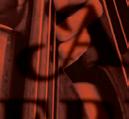



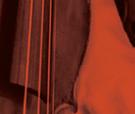


























In December 2017, my wife and I lost our apartment and had to either sleep in our car or get a motel room a few days a week when I made enough money from my Contributor sales.
We heard of a program for veterans who are homeless or at risk of going homeless. This program is called U.S. Department of Housing and Urban Development - VA Supportive Housing, or HUD-VASH.



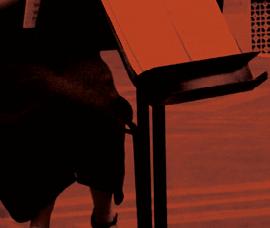
This program provides rental assistance vouchers to veterans who are eligible for VA health care services and









are experiencing homelessness.


VA case managers assist these veterans with support services to help them in their recovery process and their ability to maintain housing.
HUD-VASH enrolls the largest number and percentage of veterans who have experienced long-term or repeated homelessness.
As the third week of February 2020, my wife and I will have been in our apartment thorough God and HUD-VASH for two years!
 BY DAVID "CLINECASSO" C.
BY DAVID "CLINECASSO" C.





MICHAEL








NATHAN C.

Happy Halloween Get trick or treaty Don’t get meaty Halloween is for kids I’m looking for a gig Eat all the candy you can get Just don’t get lit Happ Howlween
















